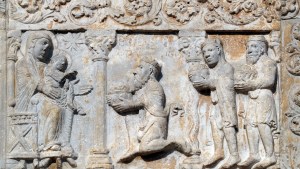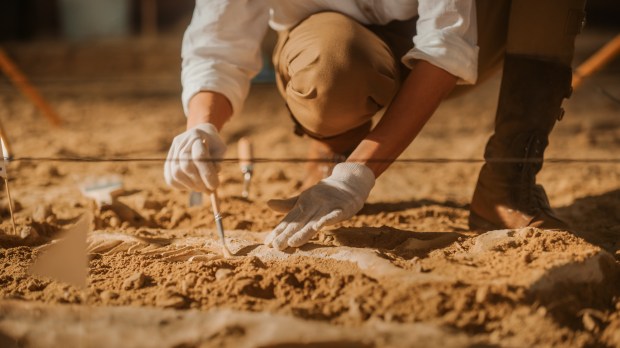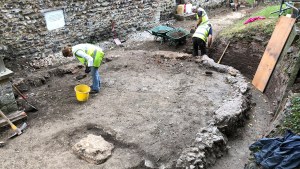Lady Isabel German was an anchoress who lived in York during the 15th century. A group of researchers at the University of Sheffield led by ostheoarchaeologist Dr. Lauren McIntiry believe that they have identified her remains.
An anchoress, according to the Catholic Dictionary, is
In medieval language a woman hermit. Also called ancress, it is commonly applied to women who have renounced the world to spend their lives in penance, prayer, and solitude. (Etym. Latin fem. of anchorita, variant of anchoreta; from Greek anakhoretes, “one who withdraws [from the world],” from anakhorein, to withdraw: ana-, back, + rhorein, to make room.)
The study, called The All Saints Anchoress? An Osteobiography, was published in Medieval Archaeology and co-authored by Lauren McIntyre, Lauren Kancle, Janet Montgomery, Joanna Moore, Darren R. Gröcke, and Geoff M. Nowell.
It explains how the team examined a collection of 667 skeletons discovered at York’s Barbican during excavations held in 2007. All these remains are now preserved at the University of Sheffield.
A particular skeleton, referred to as Skeleton SK3870, was found inside All Saints Church in Fishergate. It belonged to a medieval woman, buried in a tightly crouched position within the apse of the church, in a small room right behind the altar. What is unusual is that only clergy or the very rich were buried inside churches back then.
As read in the article published by Medievalists.net, “the study suggests that the location of this highly unusual burial makes SK3870 a prime candidate to be that of the All Saints’ anchoress, Lady German.”
“The location of the skeleton in the apse suggests this was a woman of high status, but the crouched burial position is extremely unusual for the medieval period,” Dr McIntyre explains. “The lab research also shows the woman buried at All Saints Church was living with septic arthritis […] This would have meant she lived with severe, visible symptoms of infection affecting her entire body, and later on, neurological and mental health decline […] Anchoress Lady German lived in a period of history where we typically think of there being a strong association between visible and disfiguring illnesses and sin, with that type of suffering seen as a punishment from God. While it is very tempting to suggest that someone with visible disfiguring disease would be shunned or want to commit to living as an anchoress as a way to hide from the world, this research has shown that this might not be the case. Such severe disease could also have been viewed positively, being sent by God to grant martyr-like status to someone special.”



